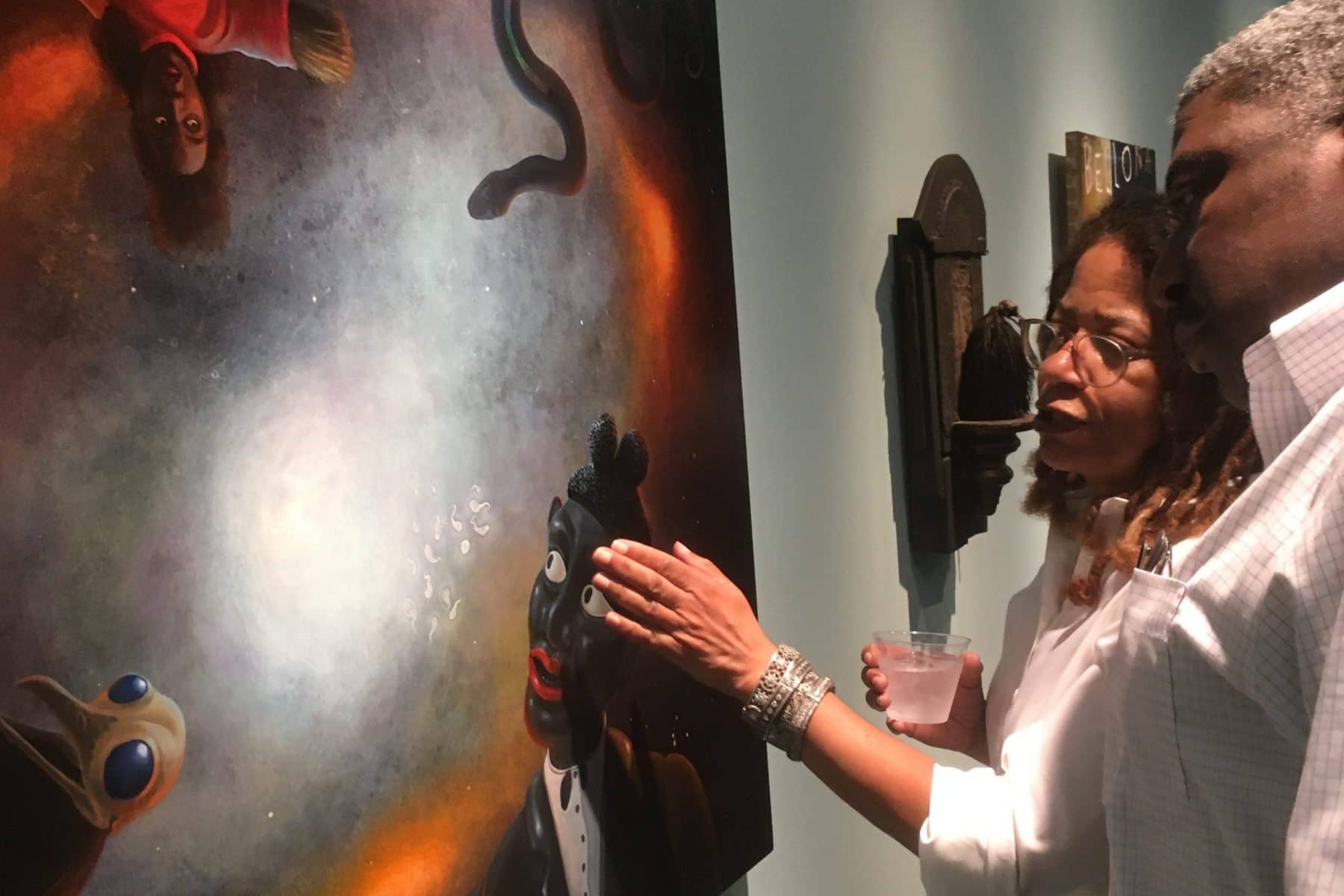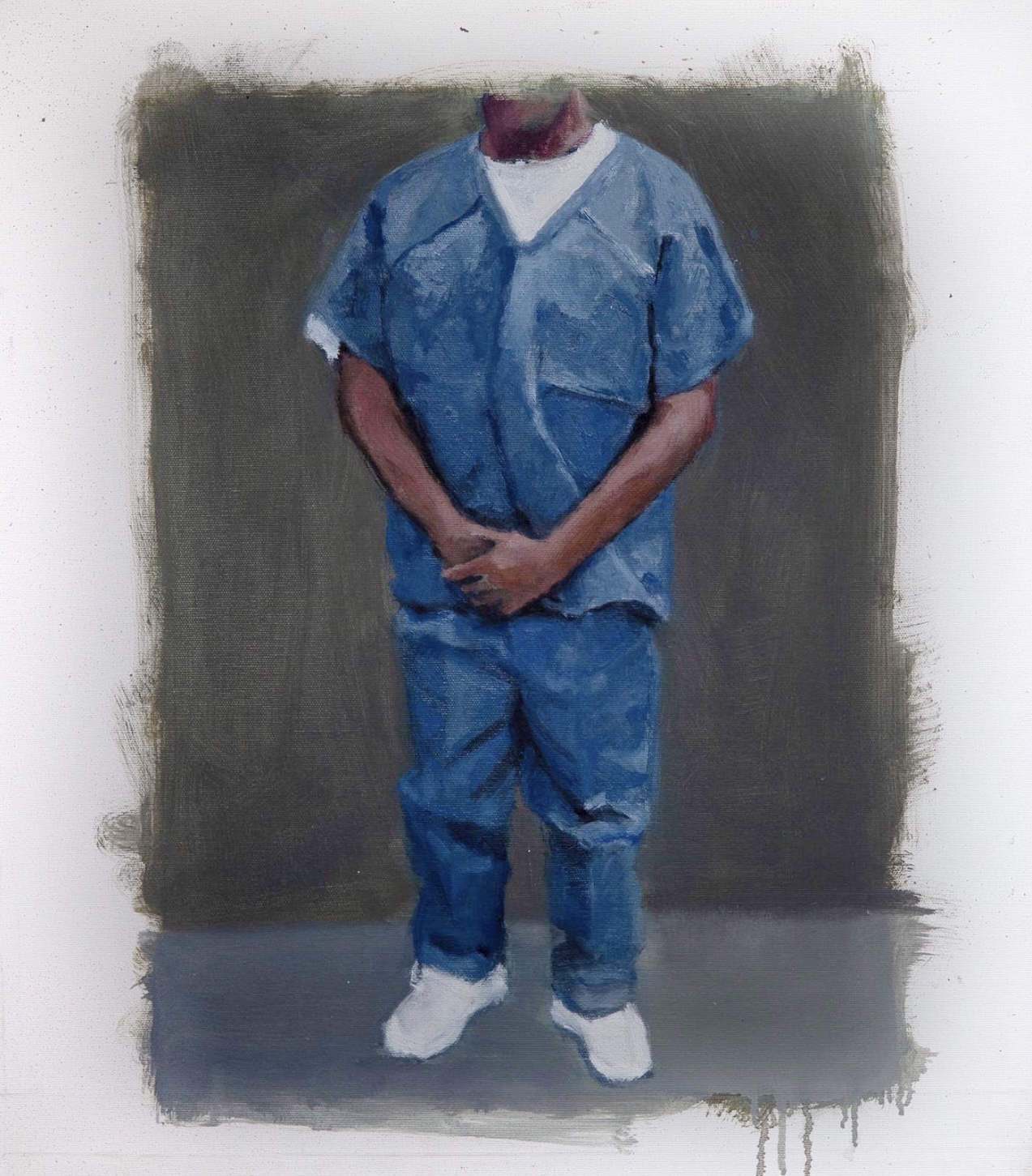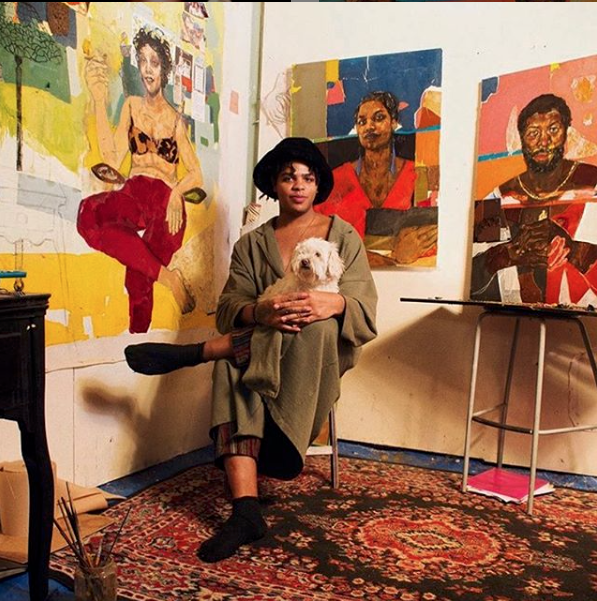Renee Stout’s solo show in Hemphill Gallery, When 6 is 9: Visions of A Parallel Universe, has over 40 individual pieces in sculpture, graphite, oil and mixed media, compiling a force of nature that is reminiscent of dreams and nightmares. The title, inspired by the Jimi Hendrix Experience song “If 6 was 9,” alludes to the transfiguration of reality as we, the audience, currently accepts it to be and to mean– a change that can only be affected by the magic hidden within us all. It also subtly deals with the tension between opposing forces of logic, color, and spiritual belief. A 24×20” mixed media eponymous piece serves as a “key” to the rest of the show, to help visitors unlock its deeper meanings. According to Hemphill’s associate director Caitlin Berry, the key concept came from an organic conversation between Stout and the Hemphill staff: “[We] reflected on her abundant references to music, figures and symbols from different cultures and concluded that they may not be easily decipherable to those unfamiliar with them,[so] she pulled written sections and drawings from her ample sketchbooks and compiled them into the key.”
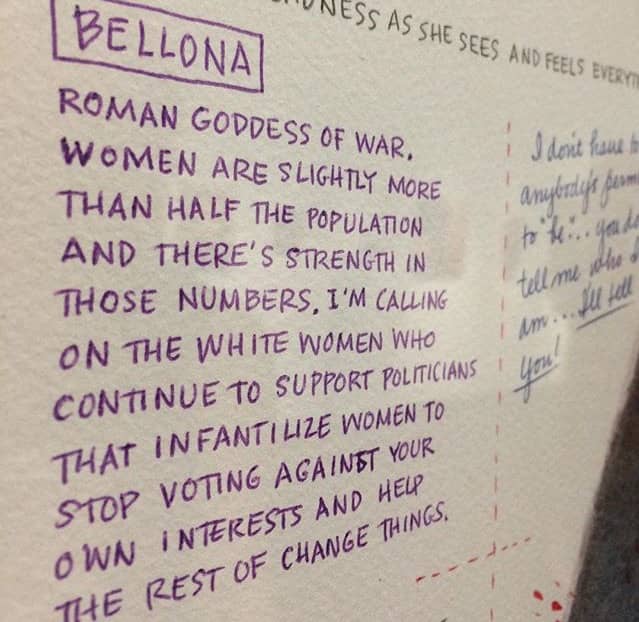
Above: If 6 was 9 by Renee Stout.
With this exhibition, Stout places traditional hoodoo in conversation with the times and universe– past, present and forever. Stout uses invisible brushstrokes to create a portal to an unnamed nebula in “The Guardians of the Parallel Universe” (2018); takes her audience back to the 90’s with recycled flip phones, such as with ”Passport #12 (George Hemphill)” (2018); or displays her findings from antique stores and curiosity shops, with the assemblage “The Guardian” (1996). Save for “The Guardian” and Passport #9 (Kevin) (2013), all of the works in the show were made within the last two years, hinting at an unspoken cataclysmic event that spurred rapid evolution of concept and technique, mixing in cultural references of rock music, technology, and root work for something entirely unexpected and new.
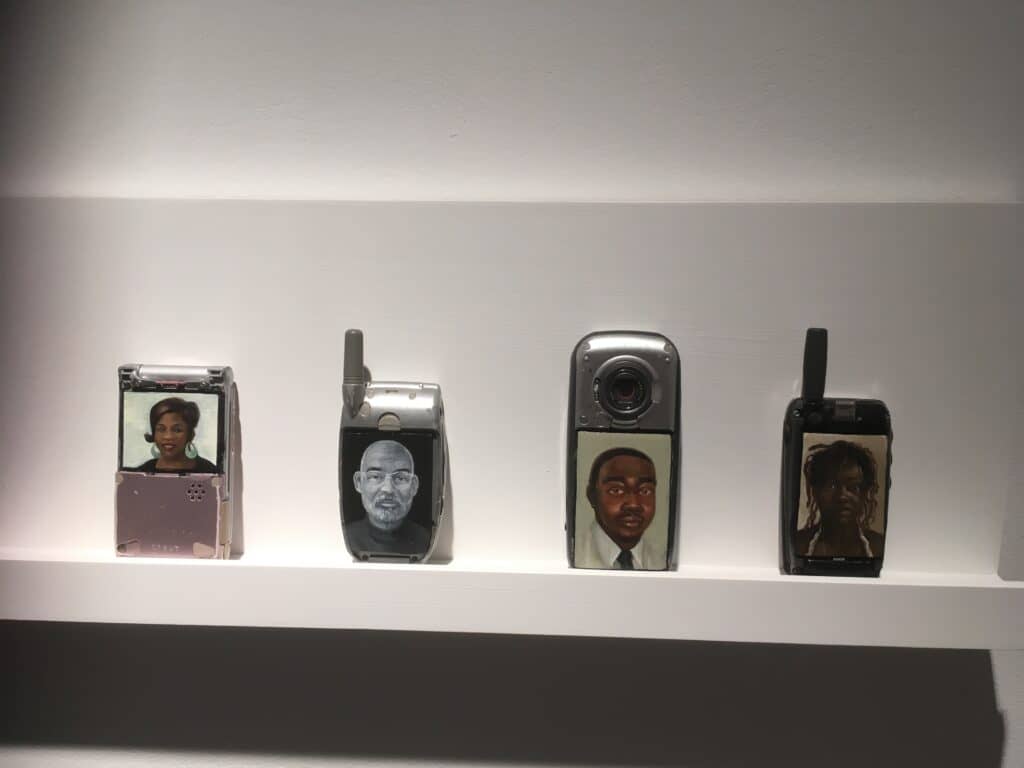
Above: Passports by Renee Stout.
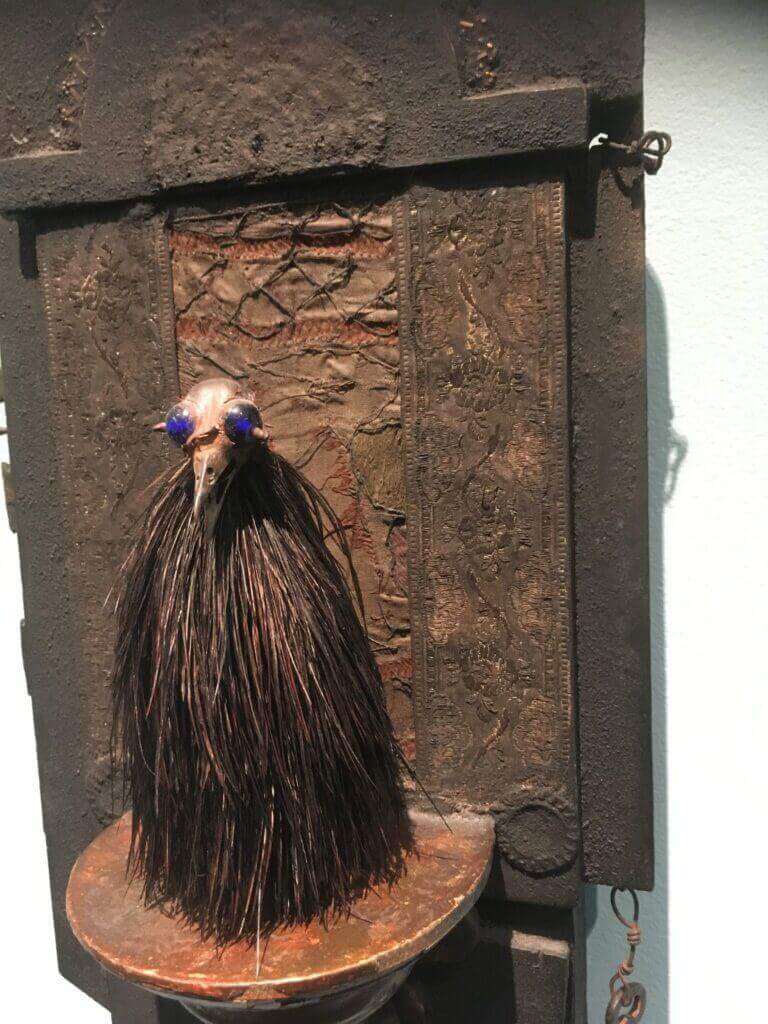
Above: The Guardian (1996) by Renee Stout.
The colors blue and red, along with characters in Stout’s repertoire, serve as talismans and visual elements that tie the massive show together. I saw familiar faces from previous shows and paintings, such as “Erzulie Yeux Rogues, the Empath”(2018), her eyes red with unshed tears or the wrath of righteousness; or her ‘Guardian’ character (a plague doctor with beady blue eyes in an orisha grass skirt, on loan from the estate of a private collector–1996) alongside the newer characters such as a straw-stuffed doll, a Buddhafied Sambo, and a multicolored snake in the blue-toned painting “The Guardians of the Parallel Universe.”
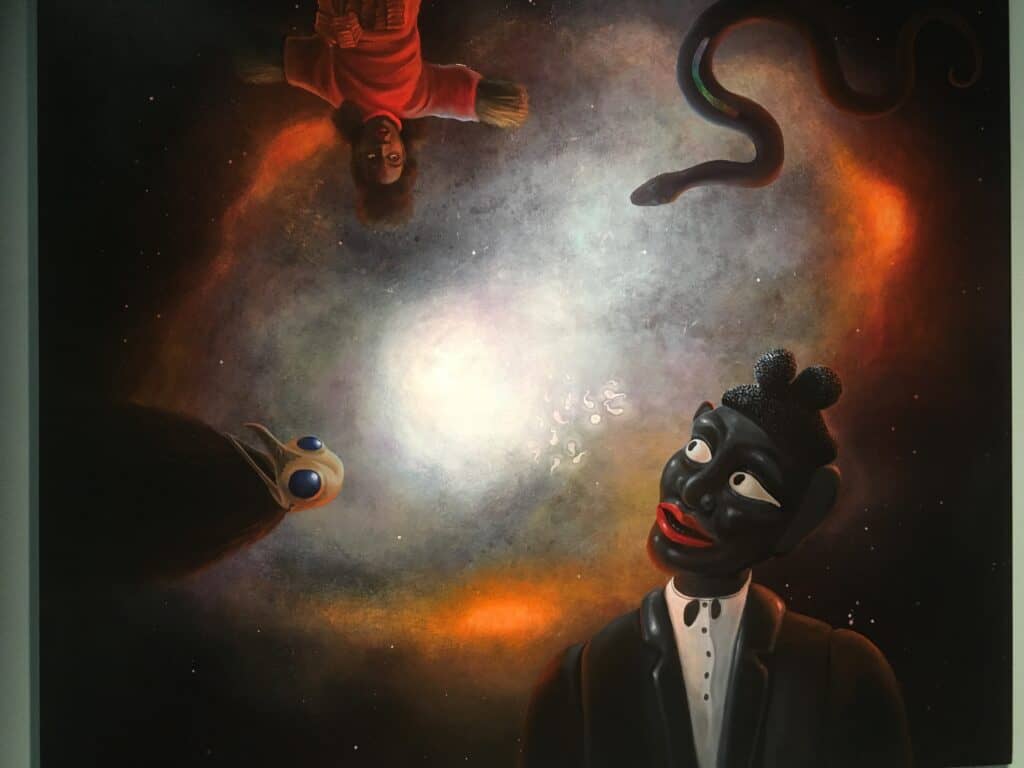
Above: The Guardians of the Parallel Universe by Renee Stout.
The piece that unified the color scheme and theme of the show is a 3x4ft canvas of mars-black and bright blue asteroids juxtaposed with a glob of carmine red (“Blood Beast vs. Haint Blue,” 2018). In particular, the color “haint blue,” is painted on the walls of the Hemphill Gallery, slightly altered to the tint of a robin’s egg to complement the red undertones of her exhibition pieces.
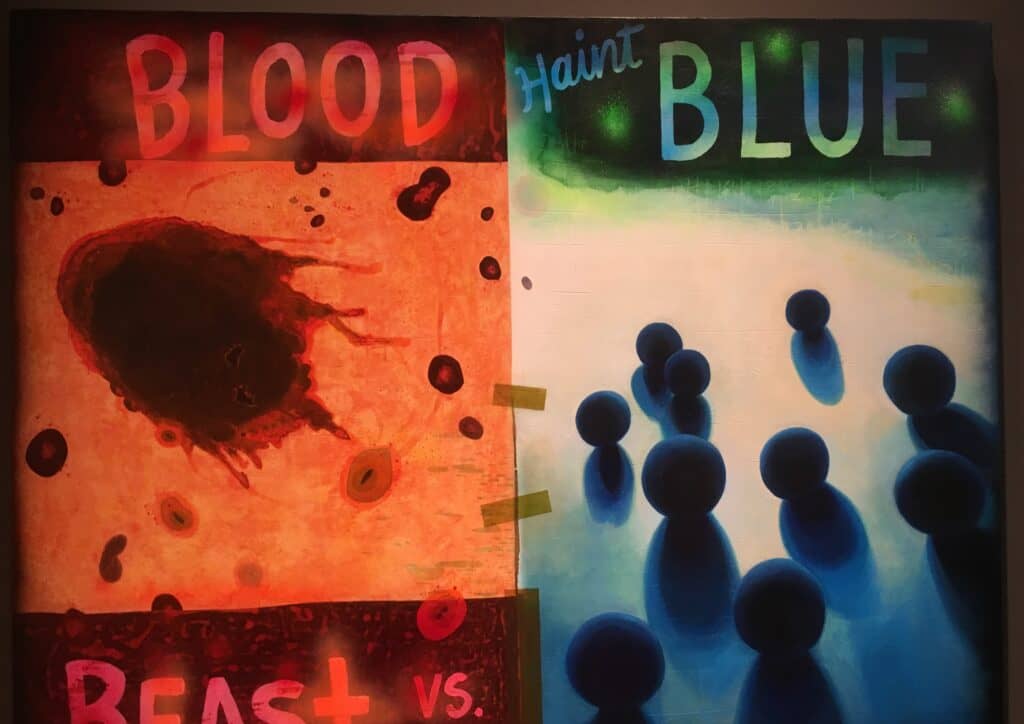
Above: Blood Beast vs. Haint Blue by Renee Stout.
This color, which can be any shade of light blue, originated with Caribbean slaves and was preserved by the Gullah people of the Carolinas. It is commonly painted on the ceilings of porches in the deep South and is meant to ward off evil spirits and unwelcome guests. Ms. Stout confirmed my guess about the meaning and use of haint blue on the walls:
Yes, “Haint blue” [is] a metaphor for warding off the growing sense of evil all around us…I used it to represent the blue ideology in what has now become a “red vs. blue” way of thinking at this time in our nation’s political climate. My painting“The Blood Beast vs. Haint Blue” was where George Hemphill got the idea to paint most of the gallery haint blue as a backdrop for my work.
It wasn’t until I started gathering all of the work that I had done for the exhibition that I realized that I had been subconsciously fixated on the idea of blood. In my mind, blood represents ALL of humanity, no matter what color we are on the outside or where we come from…But on the flip side, I’ve also used references to blood in many pieces to represent the bloody, violent times we are witnessing on all fronts.
The only other place that I remember such a color being used in a similar effect would be in the background of Sherald’s Michelle Obama portrait—and with If 6 is 9, the exhibition room is infused with a peaceful, soothing backdrop of energy.
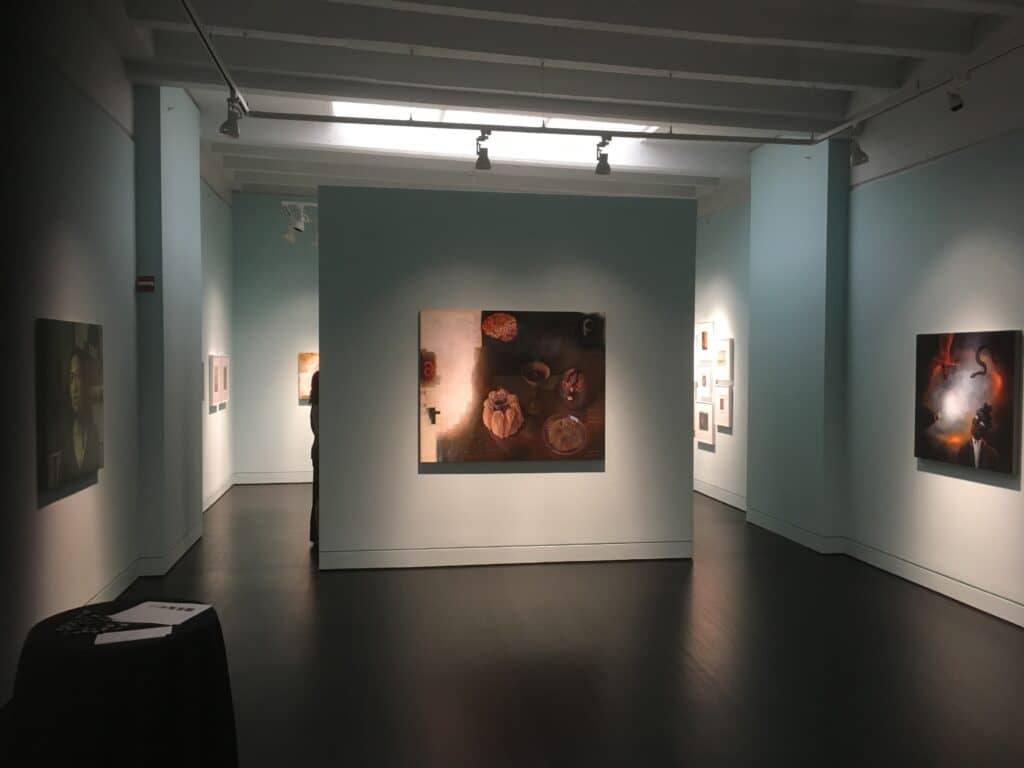
Above: Renee Stout exhibition.
Continuing into the realm of politics are several pieces that highlight Stout’s hopes and deepest fears. Pence, not Trump, makes his way into a graphite piece that takes on the cadence of sequential art, if not its exact appearance. The vice president, with his distorted gaping eyes and mouth, seems to personify the boundless rapacity of the GOP on the cusp of decay (“Sun-Ra & Posse Put Pence in Check,” 2018).

Above: Sun Ra and Posse by Renee Stout.
His mask of a face is surrounded by Sun Ra and his symbolic Arkestra of Black characters that are illustrative of different popular and positive tropes- a beautiful woman with an Afro, a professional woman with a cute pixie cut, a cool brother in suit and glasses, a West African mask, and a cowboy. In tiny letters, Stout unleashes a litany of thoughts and observations, using her characters as a shield for her real-world persona and as an amplification device: Sun Ra starts with a denouement to the mask: “With all the schools you got, all the churches you got and all the governments you got, you supposed to have a better planet than this!” The other characters play their supporting roles, climaxing with the cowboy shooting a fart out of the “stank eye” that he is giving Pence. Only the cool brother, whom Stout labels “The Silent Type,” sits composed, stars all around his head and shoulders. When I squint a little, he looks like Sean Combs.
Through Stout’s artistic career, she emphasized the importance of African Americans dialoguing more with indigenous African religions. When I asked her how the current political situation changes her message, she countered by saying:
My message from the start has never changed. I have always believed that for African Americans to escape the pickle we perpetually find ourselves in, we may need to stop fearing the original spiritual beliefs of our ancestors and embrace them. Those beliefs were not primitive in any way. We need a spiritual foundation where we are seen as beautiful and divine, not the belief systems forced upon us in slavery where we are brainwashed into thinking that we will always be “less than” because of our skin color. I believe that the day we decide to do that en masse is the day we will finally transcend all of the roadblocks thrown in our way because we will truly believe in ourselves and gain the inner strength and inspiration to rise above this mess.
Overall, I get the impression that the show goes in far beyond what social expectations of what Black, indigenous and western cultures can give to the larger world; Stout is well known for her forays into the playful side of traditional Hoodoo magic, but with her newest showing, she demonstrates that such belief systems are just a part of the higher order of things, a universe of faith nestled within a larger, more scientifically measured one. There is something frightening about the cosmos and its endless possibilities, containing secrets that have not even been conceived of by the most educated of our scientists. Ultimately, it could perfectly describe the mystery of an infinitely powerful God that has created human life, and all of the troubles and triumphs that go along with it.







